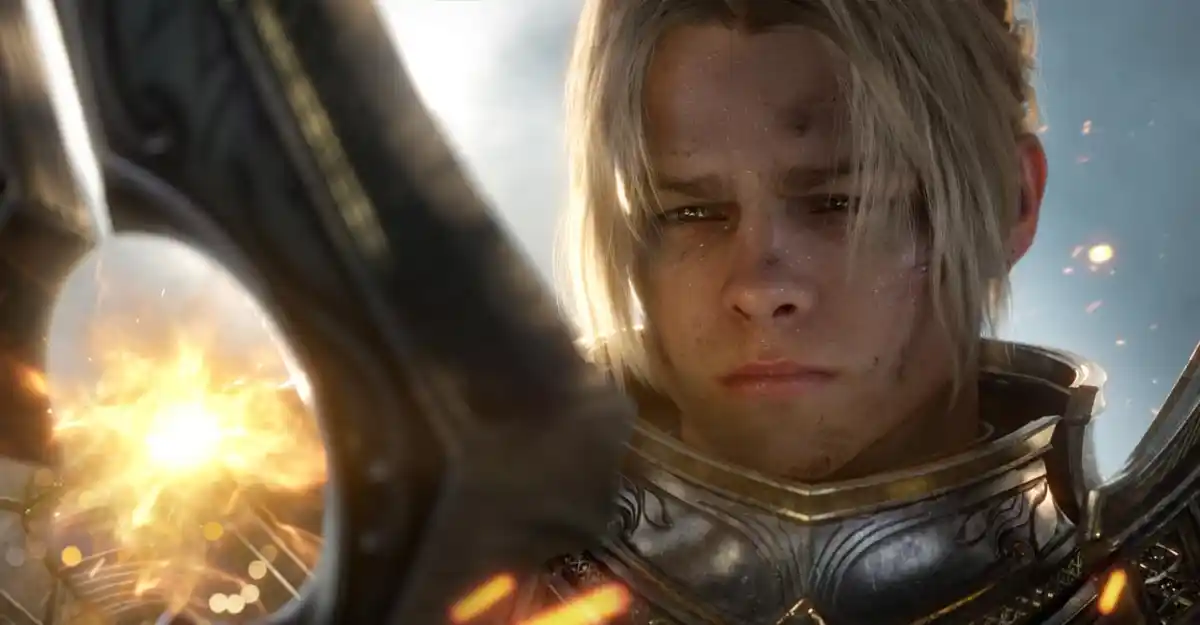The slump between expansions is a tough time for most World of Warcraft players. With the current content beginning to feel stale and the promise of the new just around the corner, most branch out into the game’s many other modes of play. From gold-making to pet battles to transmog collecting, there will always be something to pass the time.
This time, I decided to do a lore run. I wanted to take in all of the stories World of Warcraft had to offer, something I had been neglecting for some time. So, I rolled a Kul Tiran Rogue and got to work.
I’m an Alliance player and have been since I began my journey. There is an assumption that the Alliance are the good guys. They comprise knights, elves, dwarves, and those that represent heroes of the light. They live in magnificent castles and save the downtrodden. Every visual indicator points us towards this fact — it’s almost a foregone conclusion that the Alliance is good; the Horde is evil. When I was leveling my first characters, I clicked through every quest and ignored the story. This time, I saw everything differently.
Most of us Alliance mains know about Westfall. If you’ve played a human, you likely know this area well. It is a by-the-numbers farming township if you aren’t reading into it. Go kill a guy. Go kill five boars. Spy on an enemy without being spotted. Laugh at the murloc sounds. It’s so basic in its construction that it’s easy to ignore. Blizzard hasn’t touched it up since Cataclysm shook the entire world, and even then, the changes were minor. Westfall is more complicated than it seems, though, and understanding why is integral to seeing why the Alliance are the villains of Warcraft.

You begin the questline investigating the death of some aristocrats and discovering a homelessness problem. Homeless folk are everywhere. Eventually you learn that they were displaced in the wake of the Alliance’s endless wars, and that poverty has begun to spread. Stormwind has left them behind, and they walk around the countryside to the west of one of the wealthiest cities in the world unable to feed themselves.
But you only care about the murdered aristocrats, so you press the local population for answers, either killing or bribing your way through some of the local homeless. The player discovers that there are some shadowy figures trying to stir some discord and cause chaos. We are sent to Sentinel Hill to continue the investigation.
There are people who do legitimately care for the homelessness problem. Most of them are formerly homeless, and you do a few quests for a couple of these good Samaritans, who have you grab food to help feed the transients. We are in the shadow of Stormwind, and this is what we see.
As you understand this, the fortification on Sentinel Hill is painted in an entirely different light. Knights hold off a demonstrating homeless encampment on one side, slaughtering the local gnoll population on the other. It’s hard not to see the parallels between the two populations. For the gnolls, the Alliance has been encroaching on their land; for the homeless people, the land was denied. Stormwind seemingly doesn’t care about either, but when you read every piece of paper you find, it’s hard to side with the Alliance.

After slaughtering your way through the indigenous gnoll population, you finally find who has been stirring up all this trouble. It is a shadowy figure and an ogre. When you infiltrate their meeting, the figure, a woman, speaks of how the Alliance had destroyed their lives, how they failed to help their own citizens, and how they should be angry. The terrifying part of this speech is not the fact that she is evil, but that she is correct. You have to stop the movement, culminating in The Deadmines, an early-game World of Warcraft dungeon, but when you understand the story, it feels bitterer. However, without that understanding, you are the clear hero. You’re a valiant agent of the Alliance fighting off the forces of evil!
But that’s not the case. When you are incentivized to level as fast as possible and reach the endgame, it’s not worthwhile to engage with the storyline. Since that time, the story has been pushed to the cutscenes a lot more, but let’s be honest, you skip them too. In the end, that’s not why most players want to enter Azeroth.
Playing an MMO for the story feels like an act of rebellion. The grind is slow, and you are spending twice as long in any given zone, at least. Every mechanic in the game points you forward. It wants you to sprint to the current content as fast as possible. That’s where all the new, shiny things are! Why would someone even want to spend hours upon hours reading through every errant scrap of paper? You could be running Ny’alotha with your guild! To slow down in this world feels completely antithetical to the way the game was meant to be played, and yet doing so was one of the most rewarding experiences in my decade with it.

The leveling-focused gameplay of World of Warcraft invites you to engage in revisionism, and when the storyline is about the failure of Stormwind to help its own citizens, that kind of interaction between narrative and mechanic can get pretty uncomfortable. Was this intentional? It likely wasn’t, but the juxtaposition remains. It is still useful, if not necessary, to examine the unintentional implications of what games can do.
Westfall isn’t the only area where this happens. In fact, storylines across every World of Warcraft expansion have framed the Alliance as willfully negligent, as catalysts for evil. It’s part of what makes the Alliance compelling. They are flawed, and yet it takes a lot of effort on the part of the player to realize this. The mechanics unintentionally influence the player to ignore evil.
It just took me a decade to see it.





Published: Oct 1, 2020 12:00 pm